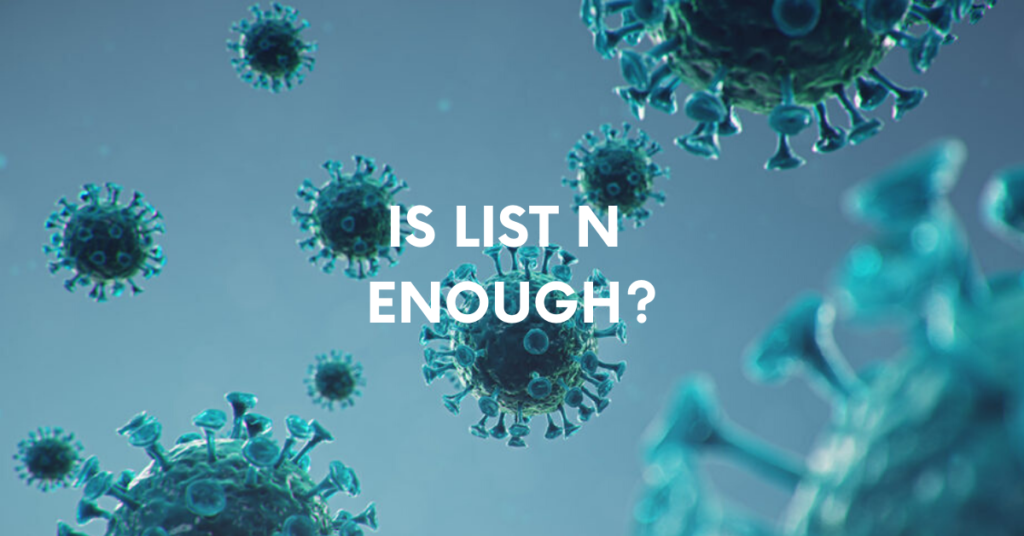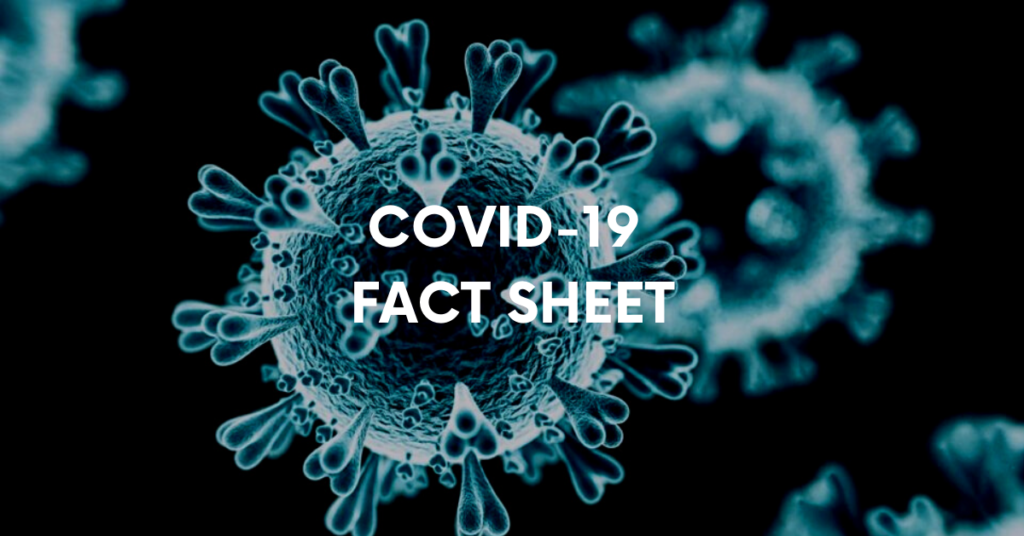COVID-19 & SARS-COV-2 Services
With over 25 years of experience in Pittsfield, MA and surrounding areas managing biohazards in environmental settings, assisting in the preparation, review and acceptance of disinfection, and a staff that includes Certified Industrial Hygienists (CIHs), Infection Preventionists (IPs), and environmental professionals, we possess the skills, training and expertise to support all of your needs.
Our COVID-19 and SARS-CoV-2 services include:
-
Environmental Cleaning Programs
-
ECP Training
-
Objective Monitoring
-
Operation of HVAC Systems and Air Movement Review
-
Exposure Control Plans
-
COVID-19 Safety Officers
At Eco-Genesis Corporation, we are qualified to prepare Environmental Cleaning Programs (ECPs) for healthcare and non-healthcare community, school, and business settings in accordance with CDC guidelines and evidence-based Best Practices. Environmental cleaning is defined as cleaning and disinfection (when indicated) of environmental surfaces (ie, floors, tables, doorknobs, light switches, countertops, handles, desks, phones, keyboards, toilets, faucets and sinks, and touch screens) and equipment. The ECP provides valuable formal documentation to decision makers and facility leadership.
Our programs establish standard operating procedures (SOPs) for cleaning, basic overall strategies and techniques for conducting environmental cleaning according to best practices, and best practices for the frequency, method, and process for the areas of concern. Where necessary, this will address high risk situations such as the cleanup of bodily fluids. Previously referred to as General Disinfection Plans, the ECP is tailored to each facility, whether implemented using in-house staff or outside contractors.
For most environmental cleaning programs, we perform a risk assessment to ensure the overall strategies will safely yield the desired result in a specific setting. We categorize the risk factors that determine the need for environmental cleaning, which include the probability of contamination with pathogens, the vulnerability of population to infection, and the potential for exposure. Risk management is intended to be part of an ongoing process in the planning, implementation, monitoring, and continuous improvement of the ECP. Given the specific scenario, it may be based on either a calculated numerical score in a matrix1 or on the Deming cycle “Plan-Do-Check-Act” breakdown of components.2
We provide Site-Specific Training and Objective Monitoring to support ECPs.
Our Site-Specific Training targets either in-house cleaning staff or outside contractors to support facility-specific ECPs. The training is based on the facility Environmental Cleaning Program, and applicable national guidelines, and is geared toward those conducting cleaning and disinfection work within the facility. Components of site-specific training include:
Training content that includes, at a minimum:
-
general introduction to the principles of Infection Prevention and Control, including transmission of pathogens, the key role cleaning staff play in keeping staff and visitors safe, and how cleaning staff can protect themselves from pathogens
-
detailed review of the specific environmental cleaning tasks for which they are responsible, including review of SOPs, checklists and other job aids
-
when and how to safely prepare and use different detergents, disinfectants, and cleaning solutions
-
how to prepare, use, reprocess, and store cleaning supplies and equipment (including PPE)
-
participatory methods, hands-on component with demonstration and practice
-
visual reminders that show the cleaning procedures (i.e., without the need for a lot of reading)
-
orientation to the facility layout and key areas for the cleaning program (e.g., environmental cleaning areas)
-
other health and safety aspects, as appropriate
Training content is tailored according to the intended audience, and that is specifically for cleaning staff who may be responsible for cleaning procedures in high risk situations, such as cleaning up bodily fluids.
Training records that include dates, training content, and names of trainers and trainees.
Annual refresher training or as needed (ie, at least annually, before introduction of new environmental cleaning supplies or equipment, etc.). Refresher training will address gaps identified during routine monitoring activities.
To support Environmental Cleaning Programs, Eco-Genesis Corporation provides initial and ongoing Objective Monitoring in accordance with CDC guidelines designed to improve ECP performance. Monitoring guidance outlines an objective process to assure the validity of information collected and allow for an objective evaluation of the thoroughness of disinfection cleaning (TDC). EGC uses a combination of technologies and practices including Direct Practice Observation, Swab Cultures, and ATP testing to assess the cleanliness of environmental surfaces.
Direct Practice Observation (or Direct Observation) is a technique that involves the observing and recording of the cleaning and disinfection process, from cleaning strategies such as top to bottom to proper mixing and application of a List N disinfectant (a disinfectant on EPA’s List N: Disinfectants for Use Against SARS-CoV-2) according to registration instructions.
At EGC, we are using swab cultures to test for the presence of coronaviruses on surfaces. Swab Cultures is a technique that measures environmental contamination by using swab cultures to identify target pathogens. EGC works with a microbiology laboratory (Eurofins Technologies) that has developed SARS-CoV-2 testing kits. Our trained industrial hygienists and infection preventionists are able to safely collect swab samples of all types of environmental surfaces (including hands) to confirm whether coronaviruses (including SARS-CoV-2) are present.
ATP Testing is a technique that measures residual organic matter that may remain after a surface, device, or piece of equipment is cleaned. Adenosine triphosphate (ATP) is an enzyme that is present in all organic matter, living and once-living. Surfaces are swabbed, swabs are measured with a luminometer, and results are available within seconds. ATP testing is a measure of cleanliness not an assessment of the presence of pathogens and is used as an indirect measure of disinfection.
In addition to ECPs and objective monitoring associated with touch points and environmental surfaces, EGC provides expertise to assist facility owners in addressing issues associated with potential airborne transmission and the operation of Heating, Ventilating, and Air-Conditioning Systems. According to the American Society of Heating, Refrigerating and Air-Conditioning Engineers (ASHRAE), it is noted that “the transmission of SARS-CoV-2 through the air is sufficiently likely that airborne exposure to the virus should be controlled. Changes to building operations, including the operation of heating, ventilating, and air-conditioning systems, can reduce airborne exposures.” For additional information, refer to the ASHRAE Position Document on Infectious Aerosols (dated April 14, 2020), BuildingsOne’s summary document titled HVAC Outdoor Air Ventilation Standard (dated February 4, 2016), and ASHRAE Standard 62.1-2019 titled Ventilation for Acceptable Indoor Air Quality.
For more information and assistance, send us an email at scott@ecogenesis.com or call 413-445-7756.
References
-
CDC and ICAN. Best Practices for Environmental Cleaning in Healthcare Facilities in Resource-Limited Settings. Atlanta, GA: US Department of Health and Human Services, CDC; Cape Town, South Africa: Infection Control Africa Network; 2019.
-
World Health Organization and Pan American Health Organization. Decontamination and reprocessing of medical devices for health-care facilities. WHO Document Production Services, Geneva, Switzerland; 2016.
-
Guh A, Carling P, Environmental Evaluation Workgroup. Options for Evaluating Environmental Cleaning. CDC; 2010.



